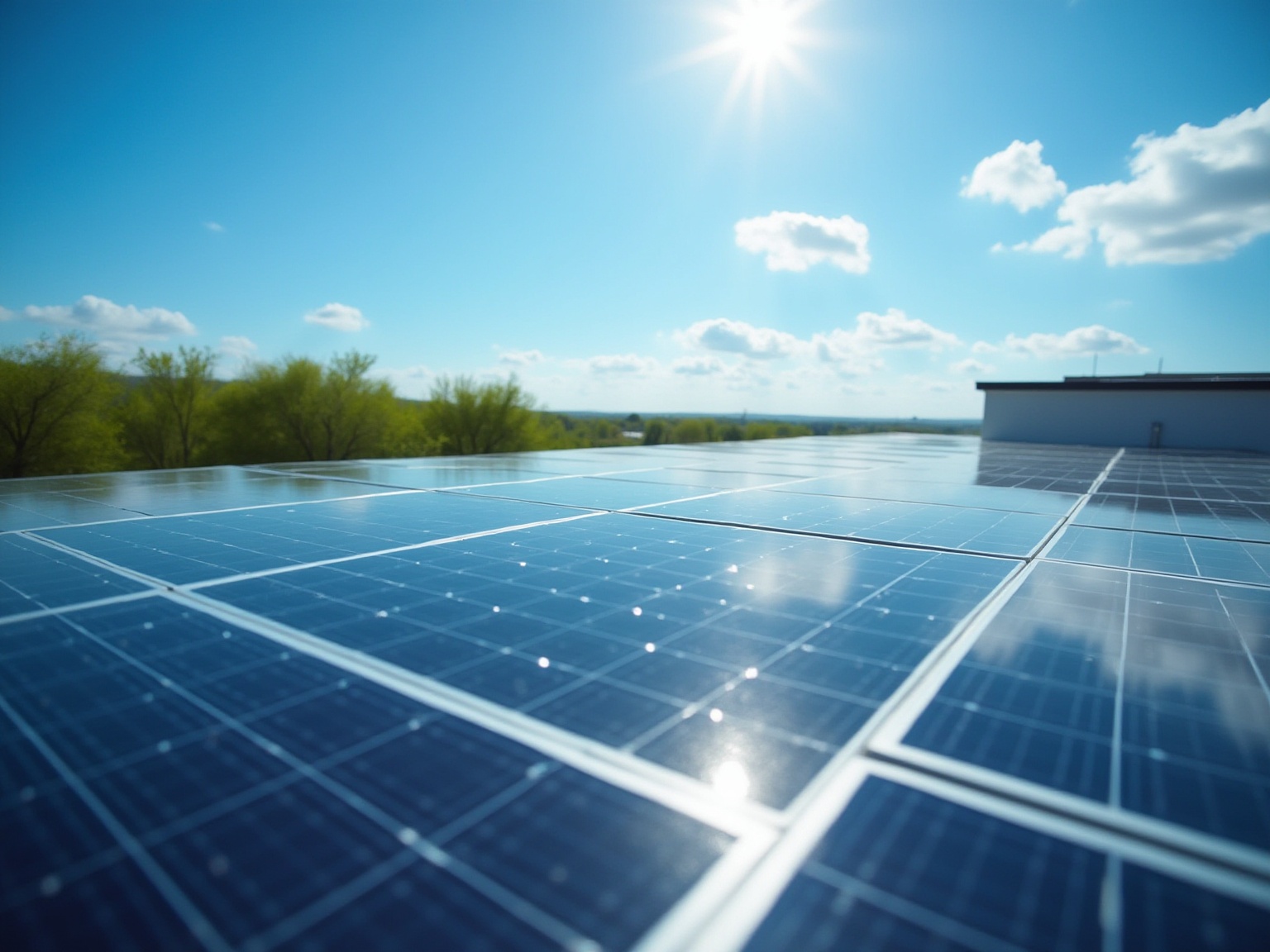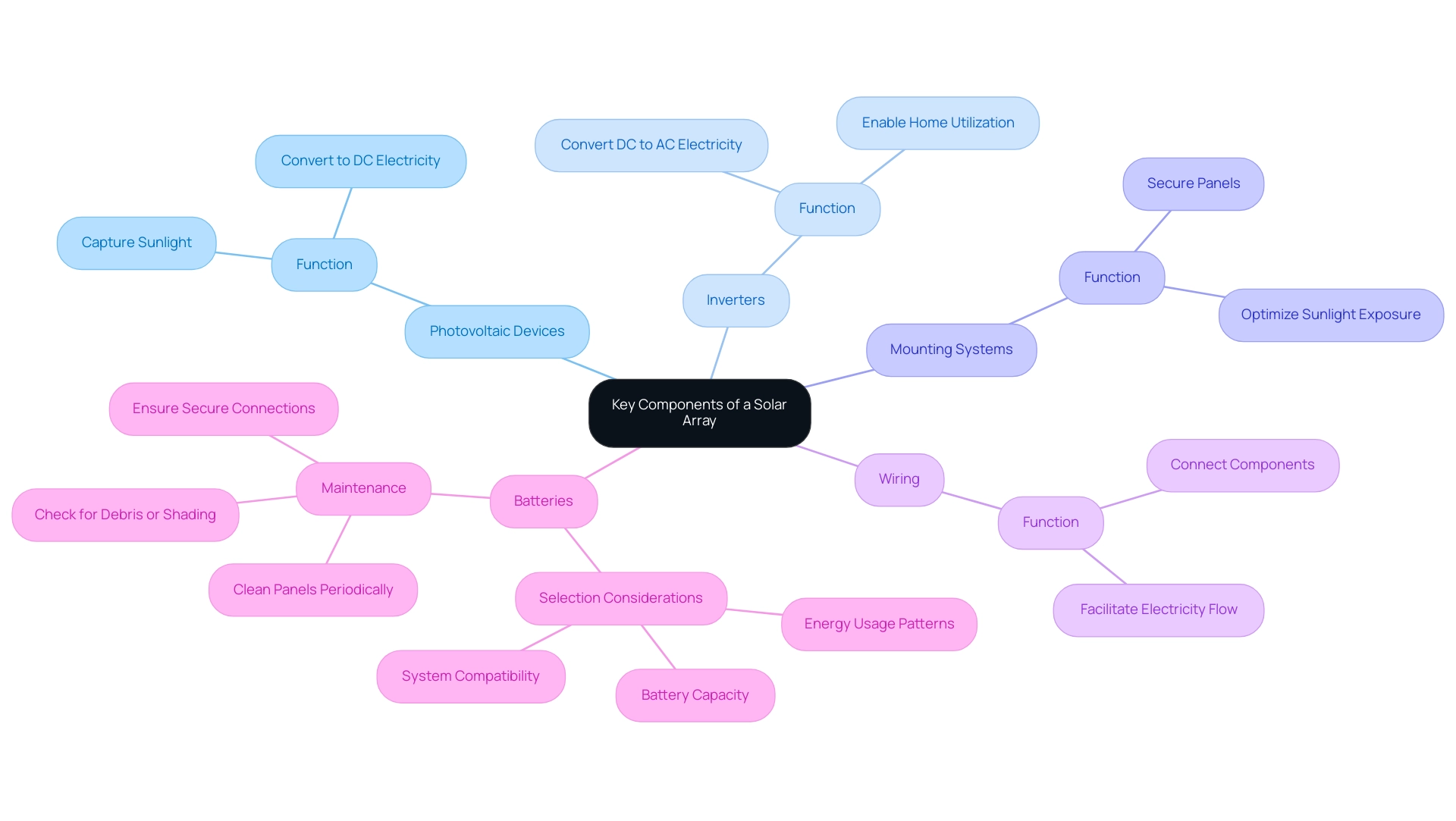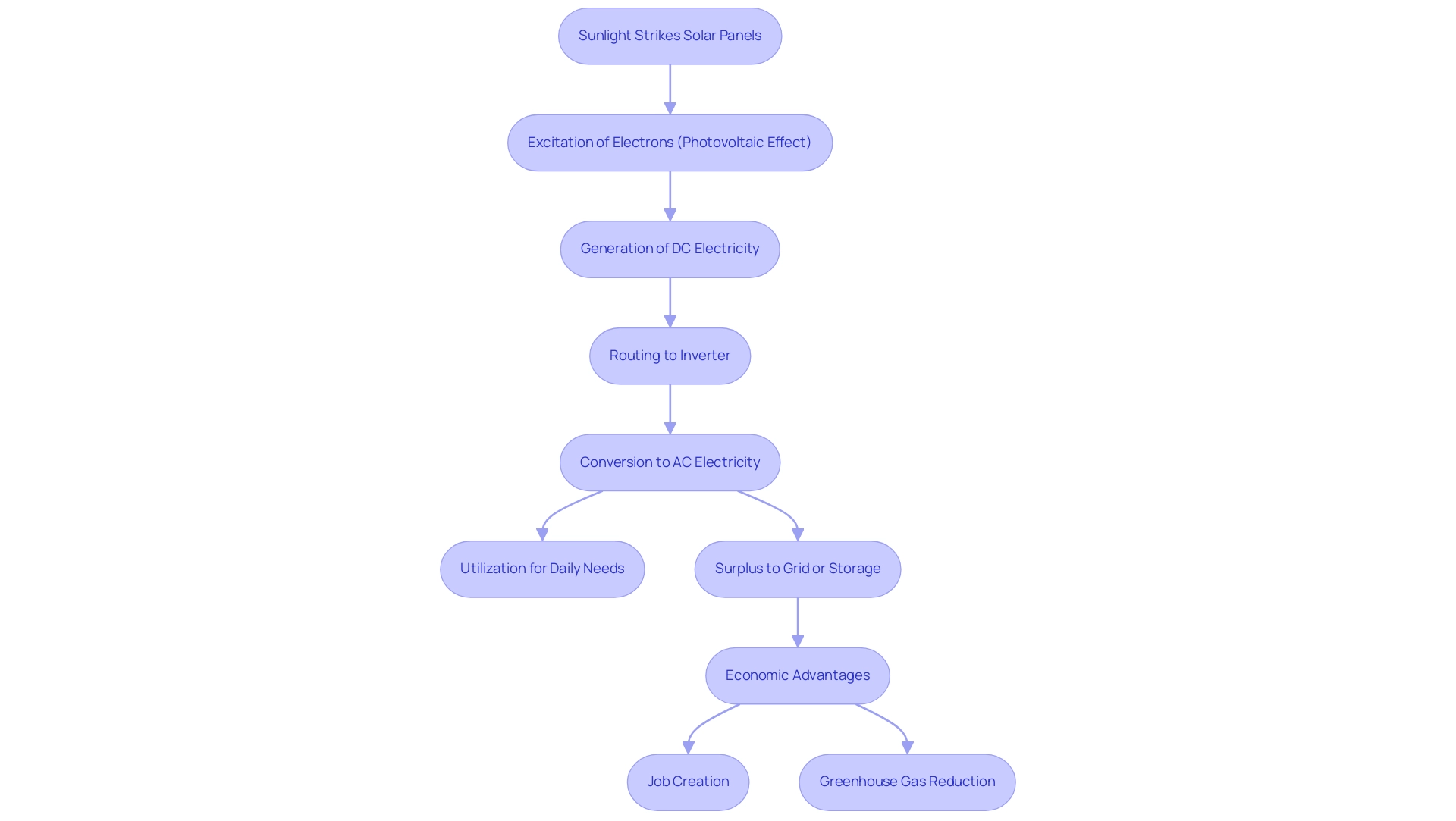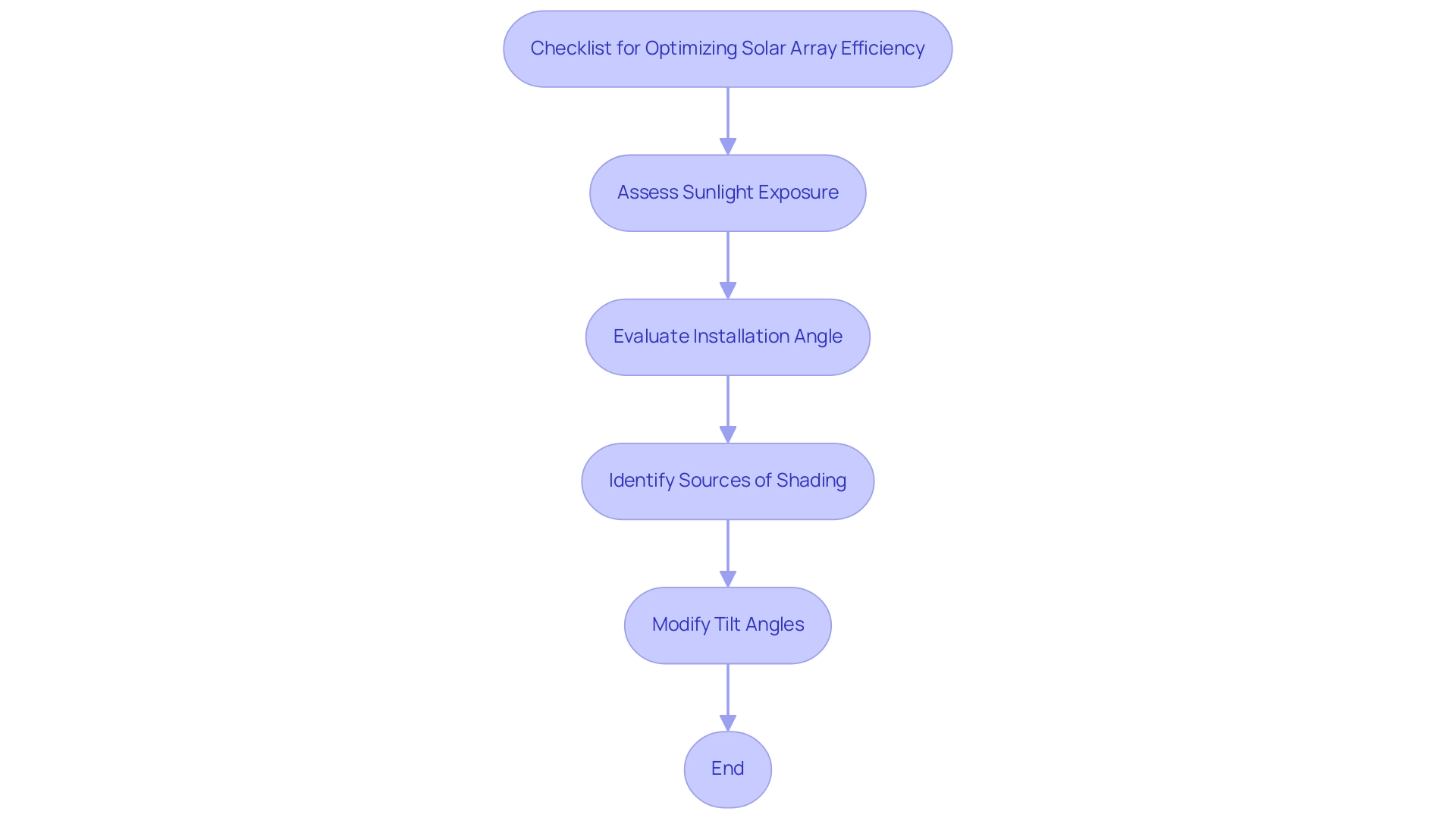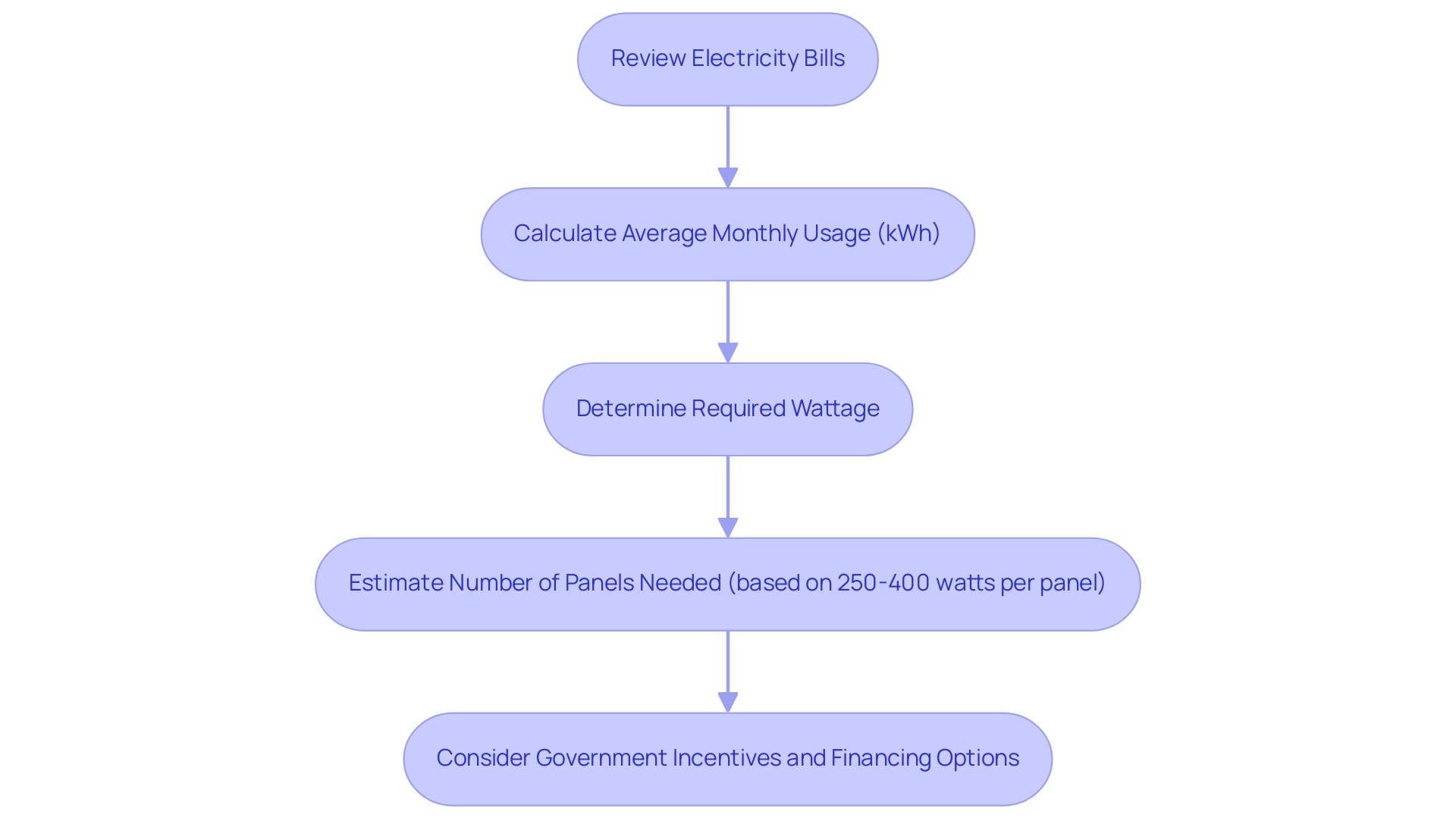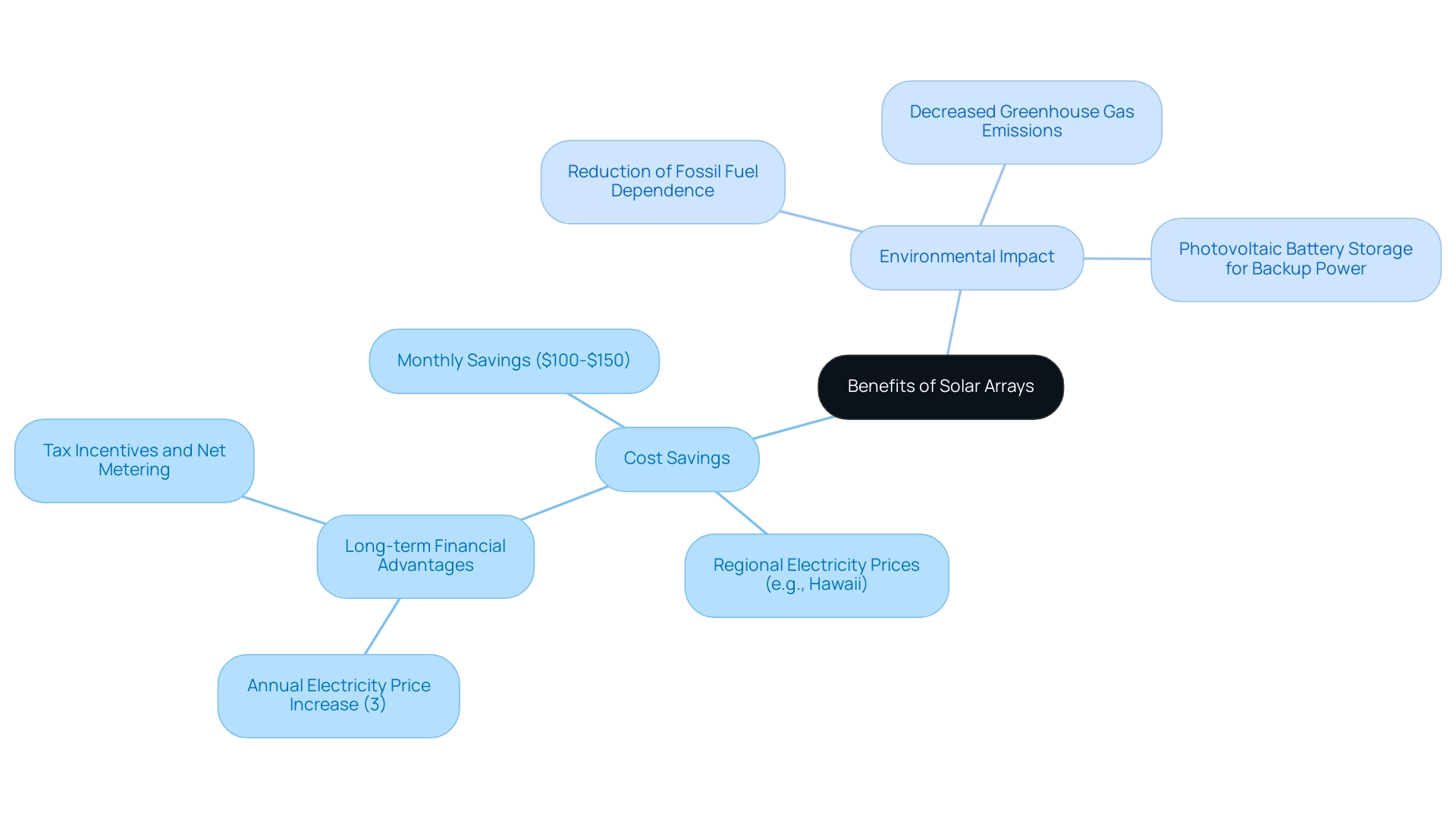Overview
A solar array is a collection of photovoltaic units that convert sunlight into electricity, with key components including solar panels, inverters, and mounting systems working together to optimize energy production. The article emphasizes the importance of understanding these components and their functions, as well as factors like location and energy needs, to maximize efficiency and achieve significant cost savings while reducing environmental impact.
Introduction
In a world increasingly focused on sustainability, solar energy stands out as a beacon of hope for eco-conscious homeowners seeking to reduce their carbon footprint while enjoying significant financial savings. Solar arrays, composed of multiple solar panels, harness the power of the sun to convert sunlight into usable electricity, offering a viable solution to rising energy costs and environmental concerns.
As advancements in technology continue to enhance the efficiency and affordability of solar systems, understanding the intricacies of solar arrays—from their essential components to their optimal placement—becomes crucial for anyone considering a transition to renewable energy.
This article delves into the mechanics of solar arrays, the factors influencing their performance, and the myriad benefits they provide, paving the way for a greener future.
Understanding Solar Arrays: Definition and Overview
A solar array is defined as a collection of numerous photovoltaic units that work together to convert sunlight into electricity, with each unit made from advanced photovoltaic (PV) cells that efficiently capture light and transform it into usable electrical power for residential applications. To maximize photovoltaic output, homeowners must consider the required capacity and optimal installation angles, as well as best practices for selecting energy inverters that match their energy needs and system compatibility. The size of photovoltaic arrays can differ significantly; they might include only a few units placed on one residence or expand to large configurations seen in energy farms.
Current market dynamics indicate that the global manufacturing capacity of photovoltaic systems is projected to reach nearly 1,000 GW by 2024, reflecting a growing reliance on this technology. In Q3 2024, U.S. module imports increased to almost 15.4 GW, affected by tariffs on imports, as the U.S. Department of Commerce enforced preliminary countervailing duties on c-Si units and cells from various Southeast Asian nations. Comprehending photovoltaic systems is essential for eco-aware homeowners considering a transition to renewable power, as these systems help define solar array, serving as the main method for capturing sunlight in home settings.
Recent advancements in photovoltaic panel efficiency, coupled with emerging technologies like AI, are enhancing performance and driving down costs. Dr. Mark Z. Jacobson from Stanford University notes that Solar PV technologies continue to improve, resulting in the continued decline in PV prices. This trend aligns with the anticipated quintuple increase of capacity to 6000 GW by 2030, emphasizing the significance of photovoltaic panels in sustainable power solutions.
Furthermore, with just 133 terawatt-hours of sunlight power generated from a capacity of 386,646 terawatt-hours in 2020, there exists considerable potential for resource utilization. Moreover, clear conversion factors standardize capacity reporting between DC and AC measurements, providing essential clarity for homeowners assessing their energy options. Furthermore, investing in heating systems not only leads to significant cost savings—estimated at $400 to $600 annually—but also contributes to reducing greenhouse gas emissions, with systems capable of preventing 2 tons of CO2 from entering the atmosphere each year, which is comparable to not operating a vehicle for four months.
Key Components of a Solar Array: What You Need to Know
To define solar array, one must understand that a photovoltaic array consists of several essential components that work harmoniously to convert sunlight into usable electricity. At its core are the solar devices that help define solar array systems, designed to capture sunlight and convert it into direct current (DC) electricity. This electricity is then converted into alternating current (AC) electricity by inverters, a critical component allowing the power to be utilized in homes.
The mounting systems secure the panels either to rooftops or on the ground, ensuring stability and optimal positioning for sunlight exposure. Additionally, electrical wiring connects these parts, facilitating the flow of electricity throughout the system. As environmentally aware residents assess their power requirements, choosing the appropriate batteries for effective power storage is essential.
To select the best energy storage batteries, property owners should:
- Analyze their energy usage patterns.
- Consider the battery capacity required to store surplus energy.
- Evaluate compatibility with their energy system.
Regular maintenance of photovoltaic panels is also essential to maximize efficiency; homeowners should:
- Clean the panels periodically.
- Check for any debris or shading.
- Ensure that all connections are secure.
With the U.S. renewable energy sector anticipated to expand by an average of 2% each year over the next five years, achieving nearly 450 GW by the conclusion of 2029, the utility-scale energy outlook for 2024 stands at 31.8 GW.
Major U.S. corporations, including Meta, Amazon, Google, Apple, and Walmart, are investing heavily in renewable energy and storage, with nearly 40 GW of capacity installed by Q1 2024. This corporate dedication to renewable power emphasizes the sector’s expansion and the inventive battery solutions arising in the marketplace. As advancements in inverter technology continue to enhance photovoltaic efficiency, understanding these components and their roles not only aids in energy savings but also contributes to a sustainable future, especially in light of the urgent need for renewable energy solutions reflected in the remarks of experts like Cristen Hemingway Jaynes, who stated, ‘The 2°C climate warming target is dead.
How Solar Arrays Work: The Mechanics of Energy Generation
To define solar array, one must understand that solar arrays transform sunlight into electricity through a process known as the photovoltaic effect. When sunlight strikes the solar panels, it excites electrons within the photovoltaic cells, generating direct current (DC) electricity. This DC electricity is routed to an inverter, converting it into alternating current (AC) electricity suitable for home use.
Eco-conscious residents can benefit significantly from this process, utilizing the electricity generated for their daily needs while any surplus can be fed back into the grid or stored in batteries for future consumption. This sustainable power generation mechanism not only provides a reliable source but also contributes to reducing utility costs and enhancing independence, aligning with recent advancements in photovoltaic efficiency. Comprehending the mechanics behind photovoltaic systems enables property owners to define solar array options for informed energy choices.
Furthermore, the economic advantages of photovoltaic heating systems extend beyond immediate cost savings; they include:
- Job creation
- Greenhouse gas reduction
- Equitable access initiatives
Homeowners can also take advantage of various incentives and rebates available for photovoltaic installations, further enhancing the financial attractiveness of these systems. It’s important to consider the financial aspects; the cost of photovoltaic (PV) installation ranges from $5,400 to $18,000, which can impact decision-making for many homeowners.
For instance, a recent case study emphasized how a family lowered their energy expenses by 50% after installing photovoltaic panels, showcasing the tangible advantages of such systems. Additionally, recent challenges in the residential energy market, such as a 4% decline in installations due to high electricity bills and changes in California’s net metering rules, underline the importance of staying informed on these evolving technologies. As Barry Elad, a tech enthusiast, emphasizes, ‘My goal is to make complex tech information easy and accessible for everyone,’ reinforcing the importance of understanding these technologies in a straightforward manner.
The Importance of Location: Maximizing Solar Array Efficiency
The efficiency of a photovoltaic array is significantly influenced by its geographical location, making it essential for environmentally aware residents to grasp how to optimize their systems. Critical factors include the installation angle, sunlight orientation, and potential shading from nearby trees or buildings, all of which can substantially impact energy output. To aid in enhancing the placement of photovoltaic systems, homeowners can adhere to this checklist:
- Assess the installation site for consistent sunlight exposure throughout the day.
- Evaluate the angle of installation based on latitude.
- Identify any potential sources of shading, such as trees or structures.
Studies show that smart tracking photovoltaic systems can enhance sunlight absorption by at least 63.55% in the equatorial area and up to 122.5% in locations at 66°34’N or 66°34’S, highlighting the significance of ideal placement. Conducting a thorough site assessment prior to installation is essential to define solar array placements that identify the most advantageous locations for energy production. For example, recent studies have employed experimental configurations to examine the relationship between photovoltaic efficiency and various meteorological factors, including wind speed, humidity, and temperature.
Homeowners can utilize this information by modifying their systems’ tilt angles according to their specific location to achieve the maximum possible output. Moreover, grasping the effects of shading on power generation is essential, as even partial shading can result in considerable decreases in efficiency. To mitigate shading effects, property owners might consider trimming nearby trees or installing panels in less obstructed areas.
Jacobson’s research, supported by funding from the Stanford Woods Institute for the Environment Innovation Fund Denmark, the NASA SMD Earth Sciences Division, and the National Science Foundation, emphasizes the credibility of these findings. By taking into account all these elements during the planning stage and adhering to the supplied checklist, homeowners can guarantee that their installations are situated for optimal efficiency, ultimately resulting in improved resource management and financial savings.
Sizing Your Solar Array: How Many Panels Do You Need?
Identifying the suitable dimensions of a photovoltaic array starts with a comprehensive examination of a household’s power usage, which is essential for Long Beach tenants seeking to define solar array options for accessing environmentally friendly power. Homeowners should carefully review their electricity bills to calculate their average monthly usage, expressed in kilowatt-hours (kWh). It’s important to note that residential households account for approximately 11.8% of total power consumption in the U.S., reflecting the vital role individual consumption footprints play in the transition to renewable sources.
Furthermore, as yearly U.S. coal output made up approximately 11% of overall production in 2023, the transition to sunlight-based power is not just an environmentally responsible option but also an essential one. To define solar array, it’s helpful to note that each photovoltaic module produces approximately 250-400 watts of energy, depending on its efficiency. Homeowners can define solar array requirements by aggregating the total wattage needed to offset their power consumption, allowing them to estimate the number of panels required to meet their unique power needs.
This procedure enhances the array and supports the current trend towards improved power resilience, particularly considering extreme weather occurrences that have caused significant power outages. The case study ‘Power Outages and Resilience‘ emphasizes the necessity for more robust grids and improved power solutions, strengthening the case for incorporating renewable power. Moreover, as the worldwide hydropower capacity factor drops below 40%, alternative power solutions such as photovoltaic systems are becoming progressively vital.
As we near 2024, grasping these dynamics will be vital for successful renewable integration, providing economic and ecological advantages for property owners. Furthermore, possible expenses for photovoltaic systems can vary from $15,000 to $25,000, based on the system size and installation details, making it crucial for property owners to evaluate available government incentives and financing alternatives. Comprehending the operation of solar systems, including their upkeep requirements and the function of battery storage units, can further improve their efficiency, guaranteeing a dependable power source.
Future Expansion: Can You Add More Panels to Your Solar Array?
To accommodate future growth, it is important to define solar array designs that allow residents the adaptability to incorporate additional units as their power requirements change. This adaptability is especially beneficial for families expecting greater power usage or planning to invest in electric vehicles. Comprehending residential photovoltaic module sizes under the 200% rule enables homeowners to enhance their systems for optimal energy advantages, including considerable cost reductions—estimated between $400 to $600 each year on utility expenses—while encouraging sustainability.
However, the current market landscape presents challenges, including the depletion of the California queue and higher financing costs, which have negatively impacted residential energy installations, leading to the lowest quarter for new installations since 2021. As the renewable energy market keeps expanding—with a new energy project being set up every 39 seconds in 2023—homeowners can gain from consulting experts during the initial design phase to ensure their systems can support extra modules without needing extensive alterations. Recent trends suggest that the average quantity of panels included during expansions has risen, demonstrating the increasing demand for renewable solutions that can adjust to evolving power requirements.
Moreover, investing in high-efficiency heating systems not only reduces reliance on conventional energy sources but also contributes to a healthier planet by preventing up to 2 tons of carbon dioxide emissions annually. The case study titled ‘Price Trends in Solar Installation’ illustrates how the cost to install photovoltaic systems has significantly decreased over the past decade, highlighting that homeowners have benefited from these trends under the 200% rule. Additionally, thermal efficiency ratings are crucial for evaluating heating systems, as they demonstrate how effectively a setup transforms sunlight into usable heat.
As global photovoltaic capacity additions are projected to reach between 544 and 876 gigawatts annually from 2024 to 2028, it is essential to define solar array expansions with additional panels, as the potential remains promising. Homeowners are encouraged to consider these factors when investing in their energy systems to ensure long-term efficiency and adaptability.
Benefits of Solar Arrays: Cost Savings and Environmental Impact
Investing in a photovoltaic system helps to define solar array benefits, particularly in terms of financial savings and environmental impact. With Powercore Electric’s local expertise and customer-first approach, residents can expect tailored solutions that maximize their savings while receiving exceptional service. Typically, property owners can reduce their electric expenses by $100 to $150 each month with a 5 kW residential energy system, resulting in considerable savings throughout the system’s lifespan.
In regions like Hawaii, where electricity prices exceed 33 cents per kWh, these savings become even more pronounced. Furthermore, considering that electricity prices in the U.S. have increased by approximately 3% annually over the last ten years, the long-term financial advantages of renewable energy investments—particularly those offered by a dedicated company like Powercore—are becoming more attractive. Tax incentives and net metering further enhance these financial benefits, enabling property owners to recover thousands of dollars over time.
Beyond the financial implications, embracing photovoltaic power helps to define solar array systems that significantly decrease dependence on fossil fuels, thereby reducing greenhouse gas emissions and aiding in a cleaner, more sustainable environment. This commitment aligns with the values of many property owners, fostering a sense of responsibility and connection to the planet. Additionally, photovoltaic battery storage can offer important backup power during outages, ensuring that homeowners sustain power reliability even when the grid is down.
While the main drawback of photovoltaic power is the high upfront installation expense, which can be a barrier for some, the long-term savings and ecological advantages often surpass this initial investment. As mentioned by Catherine Lane, a Written Content Manager at SolarReviews, providing precise estimations empowers consumers to make informed decisions about their energy investments. Satisfied customers have shared their positive experiences with Powercore, highlighting the unmatched quality craftsmanship and customer satisfaction that come with every project.
This reinforces the positive environmental and financial outcomes associated with solar energy use, particularly when choosing a provider focused on quality and service like Powercore Electric.
Conclusion
The exploration of solar arrays reveals a compelling case for homeowners to embrace this renewable energy solution. By understanding the fundamental components of solar arrays, such as solar panels, inverters, and mounting systems, homeowners can make informed decisions that cater to their energy needs. The mechanics of energy generation through the photovoltaic effect not only empower eco-conscious individuals to harness the sun’s power but also highlight the potential for significant cost savings and energy independence.
Equally important is the consideration of location and system sizing, which play critical roles in maximizing solar array efficiency. By assessing site conditions and aligning installation angles with geographical factors, homeowners can optimize their solar energy production. The adaptability of solar arrays for future expansions further enhances their appeal, allowing families to grow their systems as energy demands evolve.
The financial and environmental benefits of solar arrays cannot be overstated. From substantial savings on utility bills to tangible contributions toward reducing greenhouse gas emissions, investing in solar energy is a responsible choice for both the wallet and the planet. As the solar industry continues to evolve, with innovative technologies driving down costs and increasing efficiency, now is the time for homeowners to consider making the switch to solar energy. Embracing this sustainable solution not only supports individual financial goals but also contributes to a broader movement towards a cleaner, more sustainable future.


